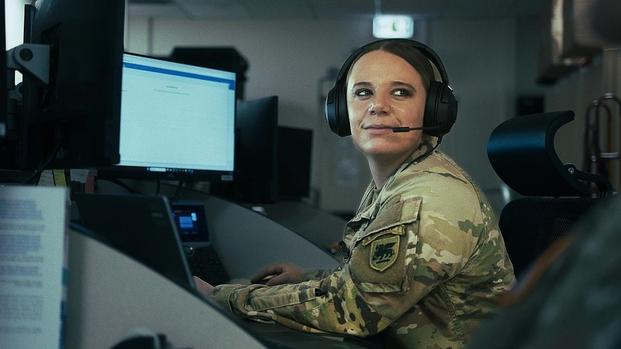The U.S. Army is betting big on artificial intelligence and data to reshape how intelligence is gathered, analyzed, and delivered to commanders. The goal is simple: make faster, smarter decisions in an era where wars are fought not just with weapons, but with information.
Unlike past modernization pushes, this effort is about weaving AI into every layer of Army operations, from headquarters planning to frontline decisions. For soldiers in the intel community, it means their work is changing fast.
Data Overload Meets AI Solutions
Army leaders know the problem: intelligence analysts are drowning in information. From satellites, drones, and cyber feeds, there’s more data than any human can process.
“Soldiers will use AI in the Army Intelligence Data Platform … AI will help Army intel analysts leverage the amount of data they consume from all sources … Once the soldiers have all of their data in the right place…” said Lt. Gen. Karl Gingrich, the Army’s deputy chief of staff for programs (G-8) (ExecutiveGov).
By automating the tedious work of sorting and structuring information, AI frees up analysts to focus on what matters, spotting patterns, predicting enemy moves, and giving commanders usable insights at the speed of relevance.
Beyond Intel: AI Across the Army
While intelligence is a key focus, the Army is clear that AI isn’t just an intel tool; it’s becoming part of nearly every mission set.
“Eventually, [AI] will get to every layer of the onion from our back-office tools and applications to the capabilities and software we build for our Soldiers,” said Bill Hepworth, with Program Executive Office Enterprise Information Systems (Army.mil).
That means everything from logistics to acquisitions to training could soon rely on AI-driven platforms. The Army is moving toward a future where machine learning and automation are as common as radios and rifles.
Keeping Soldiers Safer With Smarter Machines
The push toward AI isn’t just about efficiency; it’s also about saving lives. Integrating robotics, sensors, and AI-enabled systems into formations can reduce risk for soldiers in dangerous missions.
“The real art of the deal is going to be: how do you figure out how to integrate them [robots / AI systems] into formations in a way that optimizes the advantages? … I’m talking about no blood through first contact,” said Gen. James Rainey, commander of Army Futures Command (Defense One).
This vision reflects a major shift in how the Army thinks about the battlefield: send machines first, keep soldiers safer, and fight smarter.
The Risks: Bias, Overreliance, and Adversary Moves
AI brings promise, but also risk. Army leaders acknowledge the concerns: algorithmic bias, data privacy, and the danger of leaning too heavily on machines for decisions of life and death (Army.mil).
Rivals like China and Russia are also investing heavily in military AI, raising the stakes for the U.S. to get this right. Falling behind could mean ceding a critical advantage in future conflicts (CSIS).
What It Means for Soldiers and Families
For today’s soldiers, this evolution means learning new skills. Analysts will need to understand coding, data science, and how to manage AI-driven tools alongside traditional tradecraft.
For families, the shift could change deployments and daily work life. Some intel jobs may become more home-station focused, while others expand to new mission sets overseas (Military.com).
The Army’s modernization of intelligence is not just about tech — it’s about people, readiness, and the future of war. By embracing AI and data, the Army hopes to move faster, stay safer, and outthink its adversaries.
If successful, tomorrow’s wars may be decided as much by algorithms as by ammunition.
Story Continues
Read the full article here





